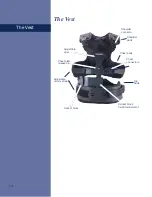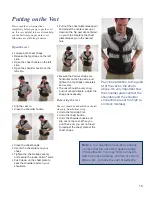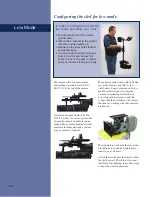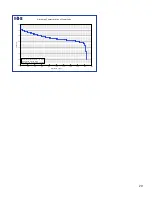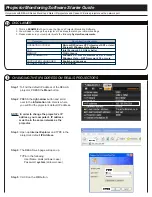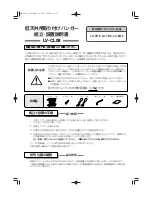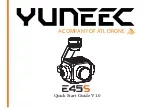
27
Tip: Many video cameras – or video cameras with film lens
adaptors – do not have a proper way to mount a dovetail
above the camera. We suggest you use the “bottom”
dovetail for low mode, shooting upside down. You will need
to flip the image in post production, so be sure that’s okay
before you shoot. You can either leave the monitor upside
down, or physically flip it over for better viewing. The latter
will require electronic flipping of the image.
Flip the monitor by unscrewing the
monitor mount, turn the monitor over and
replace the screw.
Attach the f-bracket to the gimbal handle
by inserting the post into the gimbal
handle and securing it with the pin. The
F-bracket brings the arm back into a
proper relationship with the inverted sled.
Without an F-bracket, the end of the arm
can be next to the camera. When this
is the case, switches are impossible and
operating is severely limited.
Balance the Steadicam
®
The sled can be balanced the same as in
high mode. Hang the rig by its gimbal
on the balancing stud. The camera will
still be on top, but it is upside down.
Balance statically and dynamically. Once
balanced, adjust your drop time so the
camera now falls to the bottom of the
rig: simply slide the gimbal towards the
electronics to achieve a proper drop time.
Cautionary Tip: In low mode, the dovetail
lock works better if the camera weight is
supported as you lock the dovetail.
A useful trick
The range of low mode lens heights
can be lowered by extending the center
post and/or making the rig more bottom
heavy.
Low mode operating
Traditionally, it’s considered harder to
operate in low mode than in high mode.
Why?
Several factors may work together to
make low mode operating harder. The
operator usually holds the sled further
from his body than in high mode. The
operator’s hands are not at the same
height. Many times, the post is tilted from
vertical. The boom range is sometimes
reduced. The rig may not be in dynamic
balance. The operator often cranes his
neck to see the image. In addition, every
director wants the lens height lower or
higher than one can properly reach. And
it’s just plain weird to have the monitor
so far above the lens.
Balancing on the stand with
the f-bracket attached.
Hand positions for operating
with the f-bracket.


